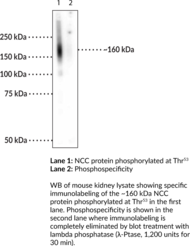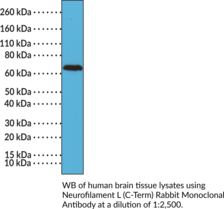ELISA Kits
Showing 2551–2700 of 3623 results
-
For quantitative detection of mouse SLIT2 in cell culture supernates, serum and plasma (heparin, EDTA).
Brand:Boster BioSKU:EK1860Available on backorder
For quantitative detection of mouse SLPI in cell culture supernates, serum and plasma (heparin, EDTA).
Brand:Boster BioSKU:EK1996Available on backorder
Brand:Boster BioSKU:EK1936Available on backorder
For quantitative detection of mouse SP-D in cell culture supernates, cell lysates, serum and plasma (heparin, EDTA).
Brand:Boster BioSKU:EK1186Available on backorder
For quantitative detection of mouse SPARCL1 in cell culture supernates, serum and plasma (heparin, EDTA, citrate).
Brand:Boster BioSKU:EK2125Available on backorder
Brand:Boster BioSKU:EK0772Available on backorder
Brand:Boster BioSKU:EK1989Available on backorder
For quantitative detection of mouse Syndecan-1 in cell culture supernates , cell lysates, serum and plasma(heparin, EDTA).
Brand:Boster BioSKU:EK1554Available on backorder
For quantitative detection of mouse Syndecan-3 in cell culture supernates , cell lysates, serum and plasma(heparin, EDTA).
Brand:Boster BioSKU:EK1556Available on backorder
For quantitative detection of mouse TEK in cell culture supernates, serum and plasma(heparin, EDTA).
Brand:Boster BioSKU:EK0976Available on backorder
For Quantitative Detection of mouse TFF1 in cell culture supernates, serum and plasma (heparin, EDTA).
Brand:Boster BioSKU:EK1620Available on backorder
For Quantitative Detection of mouse TFF3 in cell culture supernates, serum and plasma (heparin, EDTA).
Brand:Boster BioSKU:EK1629Available on backorder
For quantitative detection of mouse TFPI in cell culture supernates, cell lysates, serum and plasma (heparin, EDTA).
Brand:Boster BioSKU:EK1355Available on backorder
The Fast version of Picokine ELISA kits, assay takes less than 1.5 hours. Detect Mouse TFPI with <10pg/ml sensitivity. Format: 96-well plate with removable strips. Compatible samples: cell culture supernates, cell lysates, serum and plasma (heparin, EDTA). This is a TMB colorimetric sandwich ELISA kit with short assay time and fast experiment set up. TFPI tissue specificity: Isoform alpha is expressed in heart and spleen; isoform beta in heart and lung.
Brand:Boster BioSKU:FEK1355Available on backorder
For quantitative detection of activated mouse TGF beta1 in cell culture supernates, serum, plasma(EDTA) and urine.
Brand:Boster BioSKU:EK0515Available on backorder
For quantitative detection of activated mouse TGF-beta 2 in cell culture supernates, serum and plasma(heparin, EDTA, citrate).
Brand:Boster BioSKU:EK0983Available on backorder
For quantitative detection of activated mouse TGF-beta 3 in cell culture supernates, serum, plasma(EDTA) and urine.
Brand:Boster BioSKU:EK1104Available on backorder
For quantitative detection of mouse Thrombomodulin in cell culture supernates, serum, plasma(heparin, EDTA, citrate) and urine.
Brand:Boster BioSKU:EK1119Available on backorder
For quantitative detection of mouse TPO in cell culture supernates, cell lysates, serum and plasma (heparin, EDTA).
Brand:Boster BioSKU:EK0517Available on backorder
For Quantitative Detection of mouse TIM-3 in cell culture supernates, serum and plasma (heparin, EDTA).
Brand:Boster BioSKU:EK1645Available on backorder
For quantitative detection of mouse TIMP-1 in cell culture supernates, cell lysates, serum and plasma (heparin, EDTA).
Brand:Boster BioSKU:EK0521Available on backorder
For quantitative detection of mouse TIMP-2 in cell culture supernates, cell lysates, serum and plasma (heparin, EDTA).
Brand:Boster BioSKU:EK0955Available on backorder
For quantitative detection of mouse TIMP-4 in cell culture supernates, cell lysates, serum and plasma (heparin, EDTA).
Brand:Boster BioSKU:EK1335Available on backorder
For quantitative detection of mouse Tissue factor in cell culture supernates, serum, plasma(heparin, EDTA, citrate) and cell lysates.
Brand:Boster BioSKU:EK1367Available on backorder
For quantitative detection of mouse TLR2 in cell culture supernates, cell lysates, serum and plasma (heparin, EDTA).
Brand:Boster BioSKU:EK1130Available on backorder
For quantitative detection of mouse TNF alpha in cell culture supernates, cell lysates, serum and plasma (heparin, EDTA).
Brand:Boster BioSKU:EK0527Available on backorder
For the quantitation of Mouse Tnf concentrations in cell culture supernates, cell lysates, serum and plasma (heparin, EDTA).
Brand:Boster BioSKU:FEK0527Available on backorder
Brand:Boster BioSKU:EK0529Available on backorder
Brand:Boster BioSKU:EK0531Available on backorder
For quantitative detection of mouse TNFRSF12A/TWEAKR in cell culture supernates, serum and plasma (heparin, EDTA, citrate).
Brand:Boster BioSKU:EK1754Available on backorder
For quantitative detection of mouse TNFRSF13B in cell culture supernates, cell lysates, serum and plasma (heparin, EDTA).
Brand:Boster BioSKU:EK1144Available on backorder
For quantitative detection of mouse TNFRSF13C in cell culture supernates, cell lysates, serum and plasma (heparin, EDTA).
Brand:Boster BioSKU:EK1122Available on backorder
For quantitative detection of mouse TNFRSF14 in cell culture supernates, cell lysates, serum and plasma (heparin, EDTA).
Brand:Boster BioSKU:EK1227Available on backorder
For quantitative detection of mouse TNFRSF17 in cell culture supernates, cell lysates, serum and plasma (heparin, EDTA).
Brand:Boster BioSKU:EK0662Available on backorder
For quantitative detection of mouse TNFRSF18 in cell culture supernates, cell lysates, serum and plasma (heparin, EDTA).
Brand:Boster BioSKU:EK0769Available on backorder
For quantitative detection of mouse TNFRSF19 in cell culture supernates, cell lysates, serum and plasma (heparin, EDTA).
Brand:Boster BioSKU:EK1585Available on backorder
For quantitative detection of mouse TNFRSF22 in cell culture supernates, serum and plasma (heparin, EDTA, citrate).
Brand:Boster BioSKU:EK2007Available on backorder
For quantitative detection of mouse TNFRSF23 in cell culture supernates, serum and plasma (heparin, EDTA, citrate).
Brand:Boster BioSKU:EK2008Available on backorder
For quantitative detection of mouse TNFRSF25 in cell culture supernates, cell lysates, serum and plasma (heparin, EDTA).
Brand:Boster BioSKU:EK1515Available on backorder
For quantitative detection of mouse TNFRSF26 in cell culture supernates, serum and plasma (heparin, EDTA, citrate).
Brand:Boster BioSKU:EK2009Available on backorder
For quantitative detection of mouse TNFRSF4 in cell culture supernates, cell lysates, serum and plasma (heparin, EDTA)
Brand:Boster BioSKU:EK0998Available on backorder
Brand:Boster BioSKU:EK0699Available on backorder
For quantitative detection of mouse TNFRSF9 in cell culture supernates, cell lysates, serum and plasma (heparin, EDTA).
Brand:Boster BioSKU:EK1143Available on backorder
For quantitative detection of mouse TNFSF11 in cell culture supernates, cell lysates, serum and plasma (heparin, EDTA).
Brand:Boster BioSKU:EK0843Available on backorder
For quantitative detection of mouse TNFSF12 in cell culture supernates, cell lysates, serum and plasma (heparin, EDTA).
Brand:Boster BioSKU:EK1176Available on backorder
For quantitative detection of mouse TNFSF14 in cell culture supernates, cell lysates, serum and plasma (heparin, EDTA).
Brand:Boster BioSKU:EK1174Available on backorder
For quantitative detection of mouse TNFSF18 in cell culture supernates, cell lysates, serum and plasma (heparin, EDTA).
Brand:Boster BioSKU:EK1308Available on backorder
For quantitative detection of mouse TNFSF4 in cell culture supernates, cell lysates, serum and plasma (heparin, EDTA).
Brand:Boster BioSKU:EK0858Available on backorder
For quantitative detection of mouse TPOR in cell culture supernates, cell lysates, serum and plasma (heparin, EDTA).
Brand:Boster BioSKU:EK1436Available on backorder
For quantitative detection of mouse TREM-1 in cell culture supernates, serum, plasma(heparin, EDTA) and cell lysates.
Brand:Boster BioSKU:EK0845Available on backorder
For quantitative detection of mouse TREML1 in cell culture supernates, cell lysates, serum and plasma (heparin, EDTA).
Brand:Boster BioSKU:EK1522Available on backorder
For quantitative detection of mouse TrkB in cell culture supernates, cell lysates, serum and plasma (heparin, EDTA).
Brand:Boster BioSKU:EK0849Available on backorder
Brand:Boster BioSKU:EK1659Available on backorder
For quantitative detection of mouse TSLP in cell culture supernates, cell lysates, serum and plasma (heparin, EDTA).
Brand:Boster BioSKU:EK1206Available on backorder
For quantitative detection of mouse uPAR in cell culture supernates, cell lysates, serum and plasma (heparin, EDTA).
Brand:Boster BioSKU:EK1215Available on backorder
For quantitative detection of mouse VCAM-1 in cell culture supernates, cell lysates, serum and plasma (heparin, EDTA).
Brand:Boster BioSKU:EK0538Available on backorder
For quantitative detection of mouse VE-Cadherin in cell culture supernates, cell lysates, serum and plasma (heparin, EDTA).
Brand:Boster BioSKU:EK1318Available on backorder
For quantitative detection of mouse VEGF in cell culture supernates, serum and plasma(heparin, EDTA, citrate).
Brand:Boster BioSKU:EK0541Available on backorder
The Fast version of Picokine ELISA kits, assay takes less than 1.5 hours. Detect Mouse Vegf/VEGFA with <2pg/ml sensitivity. Format: 96-well plate with removable strips. Compatible samples: cell culture supernates, serum and plasma(heparin, EDTA, citrate). This is a TMB colorimetric sandwich ELISA kit with short assay time and fast experiment set up. Vegf/VEGFA tissue specificity: In developing embryos, expressed mainly in the choroid plexus, paraventricular neuroepithelium, placenta and kidney glomeruli. Also found in bronchial epithelium, adrenal gland and in seminiferous tubules of testis. High expression of VEGF continues in kidney glomeruli and choroid plexus in adults.
Brand:Boster BioSKU:FEK0541Available on backorder
Brand:Boster BioSKU:EK1411Available on backorder
Brand:Boster BioSKU:EK0590Available on backorder
Brand:Boster BioSKU:EK0546Available on backorder
For quantitative detection of mouse Vitamin DBP in cell culture supernates, lysates, serum, plasma (heparin) and urine.
Brand:Boster BioSKU:EK2063Available on backorder
For quantitative detection of mouse WIF1 in cell culture supernates, cell lysates, serum and plasma (heparin, EDTA).
Brand:Boster BioSKU:EK1523Available on backorder
For quantitative detection of mouse WISP1 in cell culture supernates, cell lysates, serum and plasma (heparin, EDTA).
Brand:Boster BioSKU:EK1195Available on backorder
For quantitative detection of mouse XCL1 in cell culture supernates, cell lysates, serum and plasma (heparin, EDTA).
Brand:Boster BioSKU:EK0803Available on backorder
Brand:CaymanSKU:700518 - 2 gAvailable on backorder
Brand:CaymanSKU:700164 - 1 eaAvailable on backorder
Cayman’s MTT Proliferation Assay Kit provides an easy to use tool for studying the induction and inhibition of cell proliferation in any in vitro model. This kit will also allow investigators to screen drug candidates involved in cell cycle regulation. In this assay, MTT is taken up by cells through the plasma membrane potential and then reduced to formazan by intracellular NAD(P)H-oxidoreductases.{14422}
Brand:CaymanSKU:10009365 - 480 wellsAvailable on backorder
Cayman’s Multi-Parameter Apoptosis Assay Kit is a simple way to probe for multiple different apoptotic readouts at the same time. This kit employs FITC-conjugated Annexin V as a probe for phosphatidylserine on the outer membrane of apoptotic cells, TMRE as a probe for Δψm, RedDotTM2 as an indicator of plasma membrane permeability/cell viability, and Hoechst Dye to demonstrate nuclear morphology. The kit allows phenotypic characterization of multiple different cell death parameters at the single-cell level. The reagents provided in the kit are sufficient to run 100 samples.
Brand:CaymanSKU:601280 - 100 testsAvailable on backorder
Cayman’s Multidrug Resistance Assay Kit provides a convenient tool for studying the modulation of cellular multidrug resistance (MDR) machinery. The kit employs calcein AM, a cell-permeable nonfluorescent dye, which is cleaved intracellularly to yield the impermeant fluorescent molecule, calcein. This calcein is rapidly excluded from cells expressing the MDR proteins P-gp or MRP, and so functions as a probe for the detection of chemical compounds inhibiting MDR proteins. Propidium iodide is provided as a stain for marking dead or damaged cells. Cyclosporin A, a competitive inhibitor of MDR proteins, and verapamil, a noncompetitive inhibitor, are included as controls.
Brand:CaymanSKU:600370 - 1,000 testsAvailable on backorder
Myeloperoxidase (MPO) is a peroxidase enzyme with roles in innate immunoresponse and various diseases. Cayman’s MPO (human) ELISA Kit is a sandwich assay that can be used to measure MPO in plasma and serum without prior sample purification. This assay has been validated using plasma and serum from healthy volunteers and has also been validated in RPMI-1640 with 10% fetal bovine serum. The standard curve spans the range of 0.16-10 ng/ml and has a sensitivity (defined as LLOQ) of 0.2 ng/ml.
Brand:CaymanSKU:501410 - 96 wellsAvailable on backorder
Myeloperoxidase (MPO) is a heme-containing enzyme and the most abundant protein in polymorphonuclear leukocytes (PMNs).{57128} It is comprised of two subunits linked by a disulfide bridge with each subunit containing a light and a heavy polypeptide chain. It can oxidize a variety of substrates and catalyzes the formation of highly reactive (pseudo)hypohalous acids and radicals including hypochlorous acid. MPO is stored in azurophilic granules of PMNs and is released from activated or necrotic PMNs, after which it can bind to and modify acidic serum proteins, as well as recruit additional PMNs. MPO also has roles in PMN apoptosis and antimicrobial defense systems, including neutrophil extracellular traps (NETs).{57128,23608,24590} MPO-deficient mice exhibit reduced survival in a polymicrobial sepsis model, increased susceptibility to experimental autoimmune encephalomyelitis (EAE), and increased atherosclerosis in mice also deficient in the LDL receptor and fed an atherogenic diet.{57128,57129,57127} Cayman’s Myeloperoxidase (mouse) Polyclonal Antibody can be used for ELISA, immunohistochemistry (IHC), and Western blot (WB) applications. The antibody recognizes MPO at approximately 80 kDa from mouse samples.
Brand:CaymanSKU:20493 - 1 eaAvailable on backorder
Brand:CaymanSKU:700166 - 1 eaAvailable on backorder
Cayman’s Myeloperoxidase Chlorination Fluorometric Assay provides a convenient fluorescence-based method for detecting the MPO chlorination activity in both crude cell lysates and purified enzyme preparations. The assay utilizes the non-fluorescent 2-[6-(4-aminophenoxy)-3-oxo-3H-xanthen-9-yl]-benzoic acid (APF), which is selectively cleaved by hypochlorite (-OCl) to yield the highly fluorescent compound fluorescein.{11242} Fluorescein fluorescence is analyzed with an excitation wavelength of 480-495 nm and an emission wavelength of 515-525 nm. The kit includes a MPO-specific inhibitor for distinguishing MPO activity from MPO-independent fluorescence.
Brand:CaymanSKU:10006438 - 2 x 96 wellsAvailable on backorder
Myeloperoxidase (MPO) is a member of the heme peroxidase superfamily and is stored within the azurophilic granules of leukocytes.{16902} MPO is found within circulating neutrophils, monocytes, and some tissue macrophages.{16923} A unique activity of MPO is its ability to use chloride as a cosubstrate with hydrogen peroxide to generate chlorinating oxidants such as hypochlorous acid, a potent antimicrobial agent.{16904} Recently, evidence has emerged that MPO-derived oxidants contribute to tissue damage and the initiation and propagation of acute and chronic vascular inflammatory diseases.{9886,9889} The fact that circulating levels of MPO have been shown to predict risks for major adverse cardiac events and that levels of MPO-derived chlorinated compounds are specific biomarkers for disease progression, has attracted considerable interest in the development of therapeutically useful MPO inhibitors.{16905} MPO also oxidizes a variety of substrates, including phenols and anilines, via the classic peroxidation cycle. The relative concentrations of chloride and the reducing substrate determine whether MPO uses hydrogen peroxide for chlorination or peroxidation. Assays based on measurement of chlorination activity are more specific for MPO than those based on peroxidase substrates because peroxidases generally do not produce hypochlorous acid. However, it is important that when screening for MPO inhibition that both the chlorination and peroxidation activities be tested. This determines whether the inhibitor specifically interferes with the chlorination and/or peroxidation cycle or whether the inhibitor simply acts as a scavenger for hypochlorous acid. Also, many reversible inhibitors act by diverting MPO from the chlorinating cycle to the peroxidase cycle. Cayman’s MPO Inhibitor Screening Assay provides convenient fluorescence-based methods for screening inhibitors to both the chlorination and peroxidation activities of MPO. The chlorination assay utilizes the non-fluorescent 2-[6-(4-aminophenoxy)-3-oxo-3H-xanthen-9-yl]-benzoic acid (APF), which is selectively cleaved by hypochlorite (-OCl) to yield the highly fluorescent compound fluorescein.{11242} Fluorescein fluorescence is analyzed with an excitation wavelength of 480-495 nm and an emission wavelength of 515-525 nm. The peroxidation assay utilizes the peroxidase component of MPO. The reaction between hydrogen peroxide and ADHP (10-acetyl-3,7-dihydroxyphenoxazine) produces the highly fluorescent compound resorufin. Resorufin fluorescence is analyzed with an excitation wavelength of 530-540 nm and an emission wavelength of 585-595 nm.
Brand:CaymanSKU:700170 - 2 x 96 wellsAvailable on backorder
Myeloperoxidase (MPO) is a heme-containing enzyme and the most abundant protein in polymorphonuclear leukocytes (PMNs).{57128} It is comprised of two subunits linked by a disulfide bridge with each subunit containing a light and a heavy polypeptide chain. It can oxidize a variety of substrates and catalyzes the formation of highly reactive (pseudo)hypohalous acids and radicals, including hypochlorous acid. MPO is stored in azurophilic granules of PMNs and is released from activated or necrotic PMNs, after which it can bind to and modify acidic serum proteins, as well as recruit additional PMNs. MPO also has roles in PMN apoptosis and antimicrobial defense systems, including neutrophil extracellular traps (NETs).{57128,23608,24590} MPO-deficient mice exhibit reduced survival in a polymicrobial sepsis model, increased susceptibility to experimental autoimmune encephalomyelitis (EAE), and increased atherosclerosis in mice also deficient in the LDL receptor and fed an atherogenic diet.{57128,57129,57127} Cayman’s Myeloperoxidase Monoclonal Antibody (Clone 2C8) was developed by fusing the spleen of a non-immunized NZBWF1 mouse with a mouse myeloma cell line and can be used for immunofluorescence (IF) applications.
Brand:CaymanSKU:15638 - 1 eaAvailable on backorder
Myeloperoxidase (MPO) is a heme-containing enzyme and the most abundant protein in polymorphonuclear leukocytes (PMNs).{57128} It is comprised of two subunits linked by a disulfide bridge with each subunit containing a light and a heavy polypeptide chain. It can oxidize a variety of substrates and catalyzes the formation of highly reactive (pseudo)hypohalous acids and radicals, including hypochlorous acid. MPO is stored in azurophilic granules of PMNs and is released from activated or necrotic PMNs, after which it can bind to and modify acidic serum proteins, as well as recruit additional PMNs. MPO also has roles in PMN apoptosis and antimicrobial defense systems, including neutrophil extracellular traps (NETs).{57128,23608,24590} MPO-deficient mice exhibit reduced survival in a polymicrobial sepsis model, increased susceptibility to experimental autoimmune encephalomyelitis (EAE), and increased atherosclerosis in mice also deficient in the LDL receptor and fed an atherogenic diet.{57128,57129,57127} Cayman’s Myeloperoxidase Monoclonal Antibody (Clone 5F6) was developed by fusing the spleen of a non-immunized NZBWF1 mouse with a mouse myeloma cell line and can be used for immunofluorescence (IF) applications.
Brand:CaymanSKU:15640 - 1 eaAvailable on backorder
Myeloperoxidase (MPO) is a member of the heme peroxidase superfamily and is stored within the azurophilic granules of leukocytes.{16902} MPO is found within circulating neutrophils, monocytes, and some tissue macrophages.{16923} A unique activity of MPO is its ability to use chloride as a cosubstrate with hydrogen peroxide to generate chlorinating oxidants such as hypochlorous acid, a potent antimicrobial agent.{16904} Recently, evidence has emerged that MPO-derived oxidants contribute to tissue damage and the initiation and propagation of acute and chronic vascular inflammatory diseases.{9886,9889} The fact that circulating levels of MPO have been shown to predict risks for major adverse cardiac events and that levels of MPO-derived chlorinated compounds are specific biomarkers for disease progression, has attracted considerable interest in the development of therapeutically useful MPO inhibitors.{16905} MPO also oxidizes a variety of substrates, including phenols and anilines, via the classic peroxidation cycle. The relative concentrations of chloride and the reducing substrate determine whether MPO uses hydrogen peroxide for chlorination or peroxidation. Cayman’s MPO Peroxidation Fluorometric Assay provides a convenient fluorescence-based method for detecting the MPO peroxidase activity in both crude cell lysates and purified enzyme preparations. The assay utilizes the peroxidase component of MPO. The reaction between hydrogen peroxide and ADHP (10-acetyl-3,7-dihydroxyphenoxazine) produces the highly fluorescent compound resorufin. Resorufin fluorescence can be easily analyzed with an excitation wavelength of 530-540 nm and emission wavelength of 585-595 nm. The kit includes a MPO-specific inhibitor for distinguishing between MPO activity from MPO-independent fluorescence.
Brand:CaymanSKU:700160 - 2 x 96 wellsAvailable on backorder
N6-Methyladenosine (m6A) is an abundant modification found in mRNA, tRNA, snRNA, as well as long non-coding RNA, in all species. RNA adenosine methylation is catalyzed by a multicomponent complex composed of METTL3/MT-A70, METTL14, and WTAP in mammals. METTL3 and METTL14 are responsible for the methyltransferase activity of the complex, and WTAP mediates substrate recruitment.{30057} The process shares similarities to histone methylation in that the modification is installed by m6A methylation “writers”, detected by methylation-specific “readers”, and can be reversed by demethylation “erasers”. The m6A modification has been shown to be conserved in the vicinity of stop codons and the 3’-untranslated region of specific mouse and human mRNAs.{25677} The process of regulating m6A modifications in mammalian mRNA has been linked to disease, where fat mass and obesity-associated (FTO) has been reported to be an obesity risk gene.{25677} FTO is an m6A demethylase and polymorphisms that result in increased FTO expression are associated with increased body mass and risk of obesity. Cayman’s N6-Methyladenosine Monoclonal Antibody (Clone 17-3-4-1) can be used for dot blot, ELISA, and immunoprecipitation applications.
Brand:CaymanSKU:18336 - 100 µgAvailable on backorder
N6-Methyladenosine (m6A) is the most prevalent internal modification that occurs in the messenger RNAs (mRNAs) of most eukaryotes and has been linked to effects on mRNA fate. The process shares similarities to histone methylation in that the modification is installed by m6A methylation “writers”, detected by methylation-specific “readers”, and can be reversed by demethylation “erasers”. The m6A modification has been found to be highly conserved around stop codons, in 3’-untranslated region, and within long external exons in both human and mouse cells.{25677} The process of regulating m6A modifications in mammalian mRNA has been linked to disease, where fat mass and obesity-associated (FTO) has been reported to be an obesity risk gene.{25677} FTO is an m6A demethylase and polymorphisms that result in increased FTO expression are associated with increased body mass and risk of obesity. Cayman’s N6-Methyladenosine Polyclonal Antibody can be used for ELISA and Southwestern dot blot applications.
Brand:CaymanSKU:18337 - 1 eaAvailable on backorder
Nicotinamide adenine dinucleotide (NAD) exists in an oxidized form, NAD+, as well as a reduced form, NADH. NAD, the main free form in cells, functions in modulating cellular redox status and by controlling signaling and transcriptional events, making it an important cofactor when investigating normal cellular function. Cayman’s NAD/NADH Cell-Based Assay Kit provides a colorimetric method for measuring intracellular NAD+ and NADH in cultured cells. In this assay, NAD+ found in cell samples is reduced to NADH by alcohol dehydrogenase during the oxidation of ethanol to acetaldehyde. The newly formed and the existing NADH found in the samples is then oxidized resulting in the reduction of a tetrazolium salt substrate (WST-1) to a highly-colored formazan which absorbs at 450 nm. The amount of formazan produced is proportional to the amount of total NAD in the cell lysate and can be used as an indicator of the total cellular NAD concentration.
Brand:CaymanSKU:600480 - 1 eaAvailable on backorder
Brand:CaymanSKU:700932 - 500 µgAvailable on backorder
Nampt is a 52 kDa adipokine secreted by adipose tissue that is involved in the biosynthesis of nicotinamide adenine dinucleotide (NAD+). Two forms of Nampt exist, an intracellular form (iNampt) and an extracellular form (eNampt). While the function of iNampt as an essential and rate-limiting NAD+ biosynthetic enzyme is well established, the physiological role of eNampt is still a matter of debate. Nampt has various functions, including the promotion of vascular smooth muscle cell maturation and inhibition of neutrophil apoptosis. It activates the insulin receptor and has insulin-mimetic effects, lowering blood glucose and improving insulin sensitivity. The protein is highly expressed in visceral fat and serum levels of the protein correlate with obesity.
Brand:CaymanSKU:10813 - 100 µgAvailable on backorder
Nampt is a 52 kDa adipokine secreted by adipose tissue that is involved in the biosynthesis of nicotinamide adenine dinucleotide (NAD+). Two forms of Nampt exist, an intracellular form (iNampt) and an extracellular form (eNampt). While the function of iNampt as an essential and rate-limiting NAD+ biosynthetic enzyme is well established, the physiological role of eNampt is still a matter of debate. Nampt has various functions, including the promotion of vascular smooth muscle cell maturation and inhibition of neutrophil apoptosis. It activates the insulin receptor and has insulin-mimetic effects, lowering blood glucose and improving insulin sensitivity. The protein is highly expressed in visceral fat and serum levels of the protein correlate with obesity.
Brand:CaymanSKU:10813 - 50 µgAvailable on backorder
N-acylethanolamines (NAEs) are involved in diverse biological processes such as inflammatory regulation, apoptosis, and tissue degeneration.{12164} In animals, NAEs are mainly biosynthesized via a membrane phospholipid-dependent pathway, which is the enzymatic hydrolysis of N-acyl-phosphatidylethanolamine (NAPE). The enzyme catalyzing this reaction is a phospholipase D subtype selective for NAPE named N-acyl-phosphatidylethanolamine-hydrolysing phospholipase D (NAPE-PLD). It has been cloned from mouse, rat, and human and is 393-396 amino acids in length, with an estimated molecular weight of 46 kDa. Both NAPE-PLD mRNA and protein activity have been detected in a wide range of tissues with the highest levels in brain, kidney, and testis.{11963} In rat, NAPE-PLD activity in the brain is low in neonates and is 15-fold higher in adults, whereas the activity remains constant in the heart during development.{13170}
Brand:CaymanSKU:10305 - 1 eaAvailable on backorder
N-acylethanolamines (NAEs) are involved in diverse biological processes such as inflammatory regulation, apoptosis, and tissue degeneration.{12164} In animals, NAEs are mainly biosynthesized via a membrane phospholipid-dependent pathway, which is the enzymatic hydrolysis of N-acyl-phosphatidylethanolamine (NAPE). The enzyme catalyzing this reaction is a phospholipase D subtype selective for NAPE named N-acyl-phosphatidylethanolamine-hydrolysing phospholipase D (NAPE-PLD). It has been cloned from mouse, rat, and human and is 393-396 amino acids in length, with an estimated molecular weight of 46 kDa. Both NAPE-PLD mRNA and protein activity have been detected in a wide range of tissues with the highest levels in brain, kidney, and testis.{11963} In rat, NAPE-PLD activity in the brain is low in neonates and is 15-fold higher in adults, whereas the activity remains constant in the heart during development.{13170}
Brand:CaymanSKU:10306 - 500 µlAvailable on backorder
Nav1.7 is a voltage-gated sodium channel encoded by the SCN9A gene that is expressed in sensory and dorsal root ganglia neurons as well as in the superficial laminae of the spinal cord.{41708} Nav1.7 amplifies small depolarizations of the membrane and is involved in pain perception. Inactivating gene mutations for Nav1.7 are responsible for congenital insensitivity to pain, a disorder characterized by a complete lack of pain perception. Activating gene mutations for Nav1.7 are responsible for various pain-related disorders. Mutations that decrease the action potential threshold by shifting the voltage dependence and slowing deactivation lead to hyperexcitability of dorsal root ganglia neurons in inherited erythromelalgia, which is characterized by redness and burning sensations in the feet.{41709} Missense mutations that reduce fast inactivation of Nav1.7 channels lead to persistent sodium current and are associated with paroxysmal pain disorder, which affects the sacral region and face.{41710} Cayman’s Nav1.7 Monoclonal Antibody (Clone S68-6) can be used for Western blot, immunoprecipitation, and immunocytochemistry applications.
Brand:CaymanSKU:13718 - 100 µgAvailable on backorder
CD56, also known as neural cell adhesion molecule 1 (NCAM1), is a cell surface glycoprotein and member of the immunoglobulin superfamily that is involved in cellular adhesion and neural development.{60124,60125,60126} Alternative splicing of the NCAM1 pre-mRNA produces several isoforms, including two transmembrane isoforms of 180 and 140 kDa, NCAM-180 and NCAM-140, respectively, that differ in size of the cytoplasmic domain, and a 120 kDa isoform, NCAM-120, that lacks the cytoplasmic domain and is linked to the plasma membrane by a glycosylphosphatidylinositol (GPI) anchor.{60124} CD56 is composed of an extracellular N-terminal domain containing five immunoglobulin-like (Ig-like) domains and two fibronectin type III domains that mediate homophilic and heterophilic interactions, a transmembrane domain, and an intracellular C-terminal signaling domain.{60125,60127} It is used as a marker for neural and natural killer (NK) cells, but is also expressed by other immune cells, including monocytes, T cells, and dendritic cells (DCs), as well as tumor cells, in an isoform-dependent manner.{60124,60125,60127} CD56 is increased on NK cells by stimulation with IL-15 or IL-2 and correlates with upregulation of the NK cell activating receptors NKG2D, NKp30, and NKp46 and NK cell-mediated cytotoxicity.{60124,60127} Homophilic CD56 interactions induce neurite outgrowth of cerebellar neurons and promote NK cell-mediated tumor cell lysis in vitro.{60124,60125,60126,60127} The frequency of peripheral blood CD56bright NK cells is increased in patients with melanoma and associated with reduced overall survival.{60128} Cayman’s NCAM1/CD56 (C-Term) Rabbit Monoclonal Antibody can be used for immunohistochemistry (IHC) and Western blot (WB) applications. The antibody recognizes NCAM-180 and NCAM-140 from human samples.
Brand:CaymanSKU:32257 - 100 µlAvailable on backorder
The thiazide-sensitive sodium chloride cotransporter (NCC) is a member of the SLC12 family of transporters and is encoded by SLC12A3 in humans.{46961} NCC is expressed in epithelial cells of the distal convoluted tubule and localizes to the apical plasma membrane where it mediates sodium reabsorption in the kidney. It consists of a central hydrophobic domain with 12 transmembrane helices that contain affinity-modifying residues for sodium, chloride, and thiazides that is flanked by intracellular N- and C-terminal domains with sites that are subject to phosphorylation. Phosphorylation of NCC at threonine 53 (Thr53) is mediated by serum- and glucocorticoid-inducible kinase 1 (SGK1), STE20/SPS1-related proline-alanine-rich protein kinase (SPAK), or oxidative stress-responsive kinase 1 (OSR1). X. laevis oocytes expressing a threonine-to-alanine substitution at Thr53 in NCC, which abolishes its phosphorylation, have reduced chloride deprivation-induced sodium uptake, but not NCC surface expression, compared to wild-type oocytes.{46963} NCC (phospho-Thr53) levels are increased in the kidney by low dietary intake of sodium chloride or potassium in mice.{46962} NCC (phospho-Thr53) levels are also increased in the kidney of the CUL3-Het/∆9 mouse model of familial hyperkalemic hypertension.{46964} Cayman’s NCC (Phospho-Thr53) Polyclonal Antibody can be used for immunofluorescence (IF) and Western blot (WB) applications. The antibody recognizes NCC (phospho-Thr53) at approximately 160 kDa from human, mouse, and rat samples.
Brand:CaymanSKU:29285 - 100 µlAvailable on backorder
Brand:CaymanSKU:32790 - 100 µlAvailable on backorder
Nestin, also known as neuroepithelial stem cell protein, is a type VI intermediate filament protein.{55198} Nestin monomers are comprised of a short N-terminal head domain that is required for assembly of intermediate filaments, an α-helical rod domain that mediates dimerization, and a long C-terminal tail.{55198} They form heterodimers and heterotetramers with other intermediate filament proteins, including vimentin and α-internexin, for assembly into intermediate filaments.{55198,55199} Nestin is found in a variety of tissue types but is expressed primarily in nervous tissue during embryonic development in mammals and has been used as a marker of neural stem/progenitor cells (NSPCs).{55199,55200} Nestin synthesis decreases as nervous tissues differentiate, however, nestin-positive neural stem cells are found in the subventricular zone (SVZ) and hippocampal dentate gyrus in the adult mammalian brain. Nestin is also expressed in a variety of tumor types and cancer stem cells, as well as in cerebellar Purkinje cells from patients with Creutzfeldt-Jakob disease (CJD).{55200,55201} Cayman’s Nestin Monoclonal Antibody can be used for immunocytochemistry (ICC), immunohistochemistry (IHC), and Western blot (WB) applications. The antibody recognizes a nestin doublet at approximately 220 to 240 kDa from human, mouse, and rat samples.
Brand:CaymanSKU:29286 - 100 µlAvailable on backorder
Cayman’s NETosis Assay Kit provides a simple and fast method for studying the process of NETosis ex vivo. Notably, Cayman’s NETosis Assay Kit does not depend upon the DNA component of neutrophil extracellular traps (NETs), as DNA release can occur independently of NETosis. In this kit, primary neutrophils are stimulated to release NETs with either PMA or a calcium ionophore (both included). Unbound neutrophil elastase is washed away following NET generation. Following digest of NET DNA by S7 nuclease, the supernatant containing neutrophil elastase is added to a substrate, which is selectively cleaved by elastase to yield a 4-nitroaniline product that adsorbs light at 405 nm. Enough reagents are provided to test 24 sample conditions for NET production, with analysis in duplicate.
Brand:CaymanSKU:601010 - 1 eaAvailable on backorder
Cayman’s NETosis Imaging Kit provides a simple staining protocol for visualizing the process of NETosis kinetically ex vivo and in vitro. A cell-permeable DNA dye allows visualization of the dynamic changes of the nucleus during the process of NETosis, while a cell-impermeable dye detects the extruded DNA. Combining the fluorescence visualization of these dyes with brightfield imaging in a high-content platform allows for exquisite differentiation between different modes of cell death. The amount of each reagent provided is sufficient for two 96-well plates.
Brand:CaymanSKU:601750 - 96 wellsAvailable on backorder
NeuN, also known as FOX3 and RNA binding protein fox-1 homolog 3 (Rbfox3), is a pre-mRNA alternative splicing regulator encoded by RBFOX3 in humans.{53699,53701} It is expressed in mature neurons of the brain and spinal cord and is commonly used as a neuronal marker to quantify the number of new neurons generated during adult neurogenesis or the extent of therapeutic neuroprotection in animal models of neurodegenerative disease.{53702,53700} There are two subtypes of NeuN, a 46 kDa nuclear form and 48 kDa cytoplasmic form. Cytosolic NeuN is increased in the lumbar spinal cord in a mouse model of amyotrophic lateral sclerosis (ALS) compared with control animals.{53701} Exon deletions and truncations of NeuN are found in patients with Rolandic epilepsy and RBFOX3 is located within the apparently balanced chromosomal rearrangement (ABCR) regions of chromosomes in patients with developmental delays and speech disorders.{53700} Cayman’s NeuN Monoclonal Antibody can be used for immunocytochemistry (ICC), immunohistochemistry (IHC), and Western blot (WB) applications. The antibody recognizes nuclear and cytosolic NeuN at approximately 46 and 48 kDa, respectively.
Brand:CaymanSKU:29265 - 100 µlAvailable on backorder
Neurofilament L (NF-L) is one of four subunits that form NFs, which are type III intermediate filament proteins that enable axonal growth, maintain structure, and facilitate nerve conduction.{59461,59462} NF-L is comprised of an N-terminal domain that regulates neurofilament assembly, a central α-helical rod region that mediates dimerization, and a glutamic acid-rich C-terminal tail that is subject to phosphorylation.{59461,59463,59462} It is abundantly expressed in myelinated axons in the central and peripheral nervous systems and localizes to the cytoplasm, where it associates with an NF-middle (NF-M) or -heavy (NF-H) subunit to form parallel coiled-coil heterodimers.{59463} These heterodimers then associate in an anti-parallel manner to form tetramers, which assemble into NFs. Cerebrospinal fluid (CSF) NF-L levels have been used as a marker of axonal injury in a variety of neurodegenerative diseases, including amyotrophic lateral sclerosis (ALS), multiple sclerosis (MS), Parkinson’s disease, and Alzheimer’s disease.{59461} Mutations in NEFL, the gene encoding NF-L, have been found in patients with Charcot-Marie-Tooth disease type 2E (CMT2E), a neurological disease characterized by muscle weakness and atrophy.{59464} Cayman’s Neurofilament L (C-Term) Rabbit Monoclonal Antibody can be used for immunohistochemistry (IHC) and Western blot (WB) applications.
Brand:CaymanSKU:32230 - 100 µlAvailable on backorder
Neutrophil elastase is stored within cytoplasmic azurophilic granules in the neutrophil and released upon stimulation by pathogens where it acts either as free protein or is associated with networks of extracellular traps (NET). Together with other proteases released from activated neutrophils, neutrophil elastase plays a critical role in degrading invading pathogens and thus provides the earliest line of defense in the immune system. It is thought to play a critical role in tumor invasion and metastasis as well as other inflammatory conditions. Cayman’s Neutrophil Elastase Activity Assay kit is designed to be used to study compounds regulating elastase release in neutrophils. The kit employs a specific non-fluorescent elastase substrate, (Z-Ala-Ala-Ala-Ala)2Rh110, which is selectively cleaved by elastase to yield the highly fluorescent compound R110, which can be analyzed with an excitation wavelength of 485 nm and emission wavelength of 525 nm. Reagents needed to isolate neutrophils from whole blood are included in the kit, as is PMA, which is known to stimulate elastase release from neutrophils.
Brand:CaymanSKU:600610 - 2 x 96 wellsAvailable on backorder
Myeloperoxidase (MPO), released from neutrophils to degrade invading pathogens, provides one of the earliest lines of defense in innate immunity. It catalyzes the hydrogen peroxide-mediated oxidation of halide ions to products such as hypochlorous acid (HOCl). These reactive products participate in a variety of secondary reactions which in turn lead to modifications of proteins and destruction of the extracellular matrix. Cayman’s Neutrophil Myeloperoxidase Activity Assay kit utilizes 3,3′,5,5′-tetramethyl-benzidine (TMB) as a chromogenic substrate, which upon reacting with MPO, yields a blue color detectable by its absorbance at 650 nm. The color intensity is proportional to the amount of MPO in the sample. Reagents needed to isolate neutrophils from whole blood are included in the kit, as is PMA, which is known to stimulate MPO release from neutrophils. A specific inhibitor for MPO, 4-aminobenzhydrazide (ABH), is also included in the kit for verifying the specificity of the assay.
Brand:CaymanSKU:600620 - 2 x 96 wellsAvailable on backorder
Respiratory burst, or the rapid generation of reactive oxygen species from immune cells, is crucial for the destruction of invading microorganisms by phagocytes. During this process, professional phagocytes convert molecular oxygen to superoxide anions through the action of NADPH oxidase, which is then converted to reactive oxygen species with potent antimicrobial activity. Cayman’s Neutrophil/Monocyte Respiratory Burst Assay Kit provides PMA, dihydrorhodamine 123, and additional reagents necessary for inducing and quantifying a respiratory burst response in neutrophils and monocytes by flow cytometry. The assay can be performed on whole blood or on cells in various types of cell culture media. Because the assay reagents are not species-specific, this assay can be used in any species or cell type capable of producing a NADPH oxidase-dependent respiratory burst response.
Brand:CaymanSKU:601130 - 1 eaAvailable on backorder
Cayman’s NF-κB (human p50) Transcription Factor Assay is a non-radioactive, sensitive method for detecting specific transcription factor DNA binding activity in nuclear extracts and whole cell lysates. A 96-well enzyme-linked immunosorbent assay (ELISA) replaces the cumbersome radioactive electrophoretic mobility shift assay (EMSA). A specific double stranded DNA (dsDNA) sequence containing the NF-κB response element is immobilized to the wells of a 96-well plate. NF-κB contained in a nuclear extract, binds specifically to the NF-κB response element. NF-κB (p50) is detected by addition of specific primary antibody directed against NF-κB (p50). A secondary antibody conjugated to HRP is added to provide a sensitive colorimetric readout at 450 nm. The Cayman Chemical NF-κB (human p50) Transcription Factor Assay detects human NF-κB (p50). It will not cross-react with NF-κB (p65).
Brand:CaymanSKU:10006912 - 96 wellsAvailable on backorder
NF-κB is a transcription factor activated by various extra and intracellular stimuli such as cytokines, UV radiation, stress, injury, and by bacterial and viral products. It is involved in regulation of various cellular events including cell growth, differentiation, proliferation, apoptosis, and inflammation. NF-κB1 (p50), a 50 kDa functional sub-unit of NF-κB, is a member of the Rel protein family. It is synthesized as a p105 precursor protein and consists of an N-terminal conserved RHD-region containing a nuclear localization signal, DNA-binding and dimerization domains. NF-κB (p50) forms homodimers or heterodimerizes with p65, forming the functional NF-κB factor. NF-κB (p50) directs the nuclear translocation of NF-κB and is instrumental in its DNA-binding. A pathological role of NF-κB has been suggested in AIDS, hematogenic cancer cell metastasis, and rheumatoid arthritis.
Brand:CaymanSKU:13755 - 1 eaAvailable on backorder
NF-κB p65 is a ubiquitously expressed transcription factor that is a subunit of the NF-κB complex and is encoded by the RELA gene in humans.{53059} It is composed of an N-terminal Rel homology domain, which contains the nuclear localization signal (NLS), and mediates dimerization, nuclear localization, and DNA and protein interactions, and two C-terminal transactivation domains that are subject to a variety of post-translational modifications and regulate the transcriptional activity of p65.{53059,53060} NF-κB p65 regulates the expression of a large number of genes in response to inflammatory and environmental cues that play critical roles in innate and adaptive immunity and cellular differentiation.{53060} Silencing of Rela induces tumor cell apoptosis in a murine Lewis lung carcinoma model, and RELA silencing in THP-1 monocytes decreases secreted levels of IL-1β and TNF-α induced by LPS.{53061,53062} Genome-wide deletion of Rela in mice is embryonic lethal.{5321} NF-κB p65 is overexpressed in the inflamed joints of patients with rheumatoid arthritis, and naïve CD4 T cells isolated from the whole blood of patients with multiple sclerosis have increased phosphorylation of NF-κB p65.{53065,53066} Cayman’s NF-κB (p65) Monoclonal Antibody – Biotinylated (Clone 112A1021) can be used for ELISA applications. The antibody recognizes NF-κB (p65) at 65 kDa from human, mouse, and rat samples.
Brand:CaymanSKU:13756 - 1 eaAvailable on backorder
NF-κB p65 is a ubiquitously expressed transcription factor that is a subunit of the NF-κB complex and is encoded by the RELA gene in humans.{53059} It is composed of an N-terminal Rel homology domain, which contains the nuclear localization signal (NLS), and mediates dimerization, nuclear localization, and DNA and protein interactions, and two C-terminal transactivation domains that are subject to a variety of post-translational modifications and regulate the transcriptional activity of p65.{53059,53060} NF-κB p65 regulates the expression of a large number of genes in response to inflammatory and environmental cues that play critical roles in innate and adaptive immunity and cellular differentiation.{53060} Silencing of Rela induces tumor cell apoptosis in a murine Lewis lung carcinoma model, and RELA silencing in THP-1 monocytes decreases secreted levels of IL-1β and TNF-α induced by LPS.{53061,53062} Genome-wide deletion of Rela in mice is embryonic lethal.{5321} NF-κB p65 is overexpressed in the inflamed joints of patients with rheumatoid arthritis, and naïve CD4 T cells isolated from the whole blood of patients with multiple sclerosis have increased phosphorylation of NF-κB p65.{53065,53066} Cayman’s NF-κB (p65) Monoclonal Antibody (Clone 112A1021) can be used for flow cytometry (FC), immunohistochemistry (IHC), and Western blot (WB) applications. The antibody recognizes NF-κB (p65) from human, mouse, and rat samples.
Brand:CaymanSKU:13752 - 1 eaAvailable on backorder







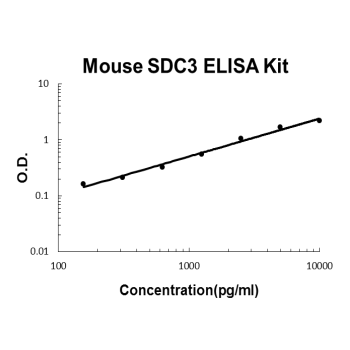


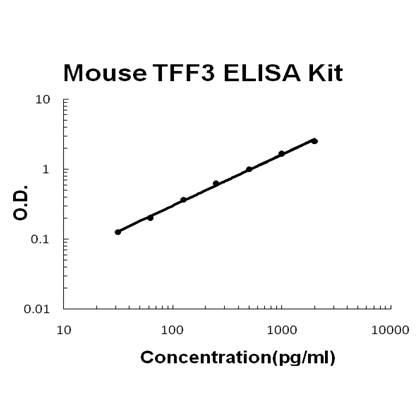
















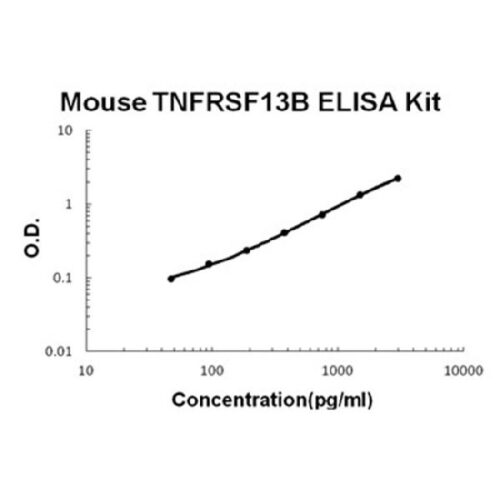


















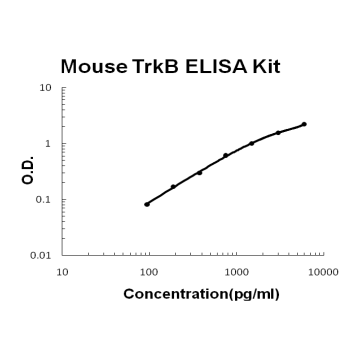




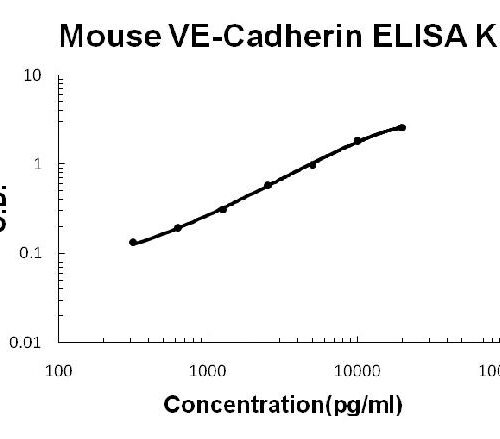












![Cayman’s Myeloperoxidase Chlorination Fluorometric Assay provides a convenient fluorescence-based method for detecting the MPO chlorination activity in both crude cell lysates and purified enzyme preparations. The assay utilizes the non-fluorescent 2-[6-(4-aminophenoxy)-3-oxo-3H-xanthen-9-yl]-benzoic acid (APF)](https://interpriseusa.com/wp-content/uploads/2021/04/10006438.png)











